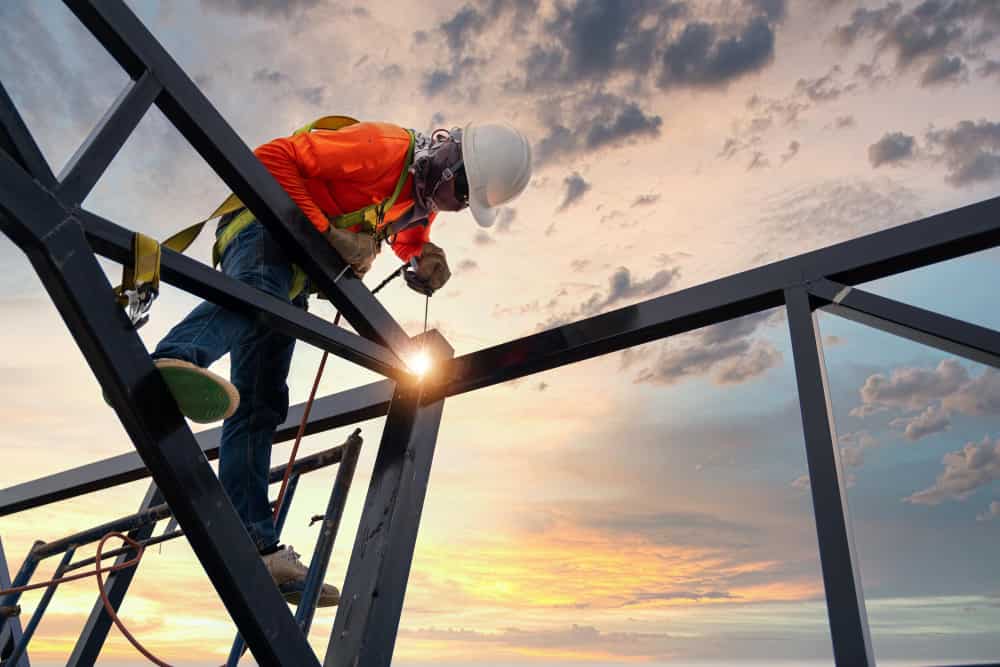Weld quality stands as the foundation of structural welding excellence, in line with specifications laid out by the American Iron and Steel Institute (AISI) and codified in American Welding Society (AWS) standards, including Codes D1.1, D1.2, and D1.6. Here, “quality” signifies adherence to specifications—defined as the stipulated requirements of codes, blueprints, or contracts.
Crucially, weld quality cannot simply be inspected into a project after the fact; it is the culmination of ongoing enhancements to the production process. Industries such as those involved in constructing seismic structures, fabricating nuclear components (ASME Section III), or pressure vessels (ASME Section VIII) embody this mindset, recognising that in projects where weld failure equates to unacceptable risks to human safety, environmental integrity, or property, excellence in welding is not optional.


The consequences of inferior welding are far-reaching, potentially resulting in loss of life, significant financial loss from lawsuits, warranties, or the resource drain of extensive rework. Quality welding, therefore, is paramount in creating structures that are not only safe and reliable but also uphold the highest standards of structural integrity. This discourse underscores the critical nature of achieving and maintaining quality in structural welding and fabrication endeavours.
Companies like Lincoln Welders, Hobart Welding Products, and Esab Welding & Cutting Products produce welding equipment that meets or exceeds industry standards. However, without skilled welding operators trained to use this equipment properly and in accordance with quality standards, the welding process itself falls short.
Quality in welding doesn’t simply emerge from the final inspection; it’s embedded into the very fabric of the production process through a robust Quality Management System (QMS). This proactive approach shifts the focus to preventing defects during the welding process rather than detecting them after the fact.
By implementing stringent process controls—including the monitoring and adjustment of welding parameters, the rigorous qualification of welding procedures, precise equipment calibration, comprehensive training programs, and meticulous record-keeping—a QMS ensures that quality is built into every weld.
While weld inspections are an indispensable part of the quality assurance puzzle, they are not a panacea for all quality issues. Critical to augmenting weld quality is the deployment of nondestructive testing (NDT) methods alongside regular process controls, ensuring both the integrity and the excellence of the welds.
Key to a functional QMS is process validation, necessitating the verification of processes through a Procedure Qualification Record (PQR) before production begins, ensuring that all operations meet the predetermined standards of quality.
Furthermore, educating welders and all personnel involved in welding activities is paramount. Since welders are at the forefront of the welding process, their role in maintaining weld quality is critical. They must be trained to recognise when to halt operations and seek assistance upon spotting any weld discontinuities, thereby preventing potential defects from progressing unchecked.
For organisations aiming to realise ‘First Time Quality’ in their structural welds, reduce production costs, and construct safe, dependable structures, the implementation of a comprehensive QMS, complemented by continuous investment in the education and qualification of welding personnel, is essential.
The integrity of weld inspection is a cornerstone in maintaining the highest standards in welding quality. AWS Senior Certified Welding Inspectors (SCWI), Certified Welding Inspectors (CWI), and American Society for Nondestructive Testing (ASNT) Level II/III inspectors play a pivotal role in this process. Their expertise is not limited to conducting thorough inspections to verify compliance with applicable codes, specifications, or drawings but extends to a broad array of responsibilities that ensure the overall integrity of the welding project.
For instance, while AWS SCWIs and CWIs primarily focus on visual inspections, they are also instrumental in analysing the outcomes of nondestructive testing performed by ASNT-certified crews, reviewing critical documents such as welder qualifications, welding procedure specifications (WPS), and ensuring all aspects of the weld are documented and meet the project’s rigorous quality standards.
Furthermore, the introduction of pre-project briefings, spearheaded by the customer or general contractor, aims to align all project stakeholders — from welders and inspectors to quality assurance personnel and project supervisors — with the expected level of workmanship, thereby establishing a unified understanding of quality expectations before welding commences. In this framework, the customer embodies the ultimate standard of quality, emphasising that only the highest levels of welding craftsmanship are acceptable for their project.
The essence of superior welding workmanship lies not just in the technical prowess but in the core human attributes that welders and their teams bring to the table. At the heart of every successful welding project is a culture of craftsmanship characterised by a collective behaviour and mindset valuing precision, dedication, and excellence. Here are the pivotal human performance attributes that significantly contribute to achieving outstanding welding workmanship quality:
By embodying these attributes, welding professionals and their teams not only uplift their own standards but also contribute significantly to the industry’s reputation for quality and reliability.
This website uses cookies.